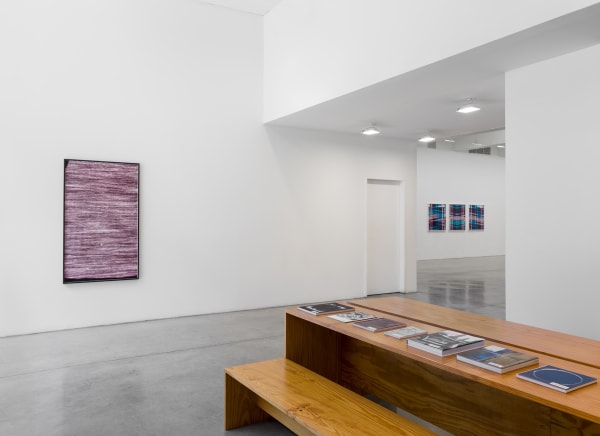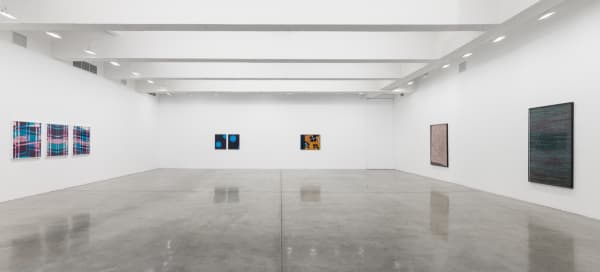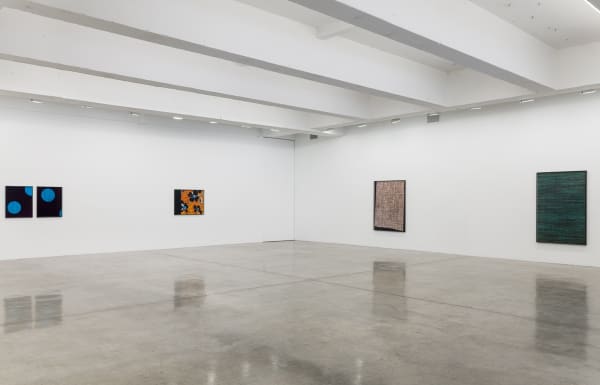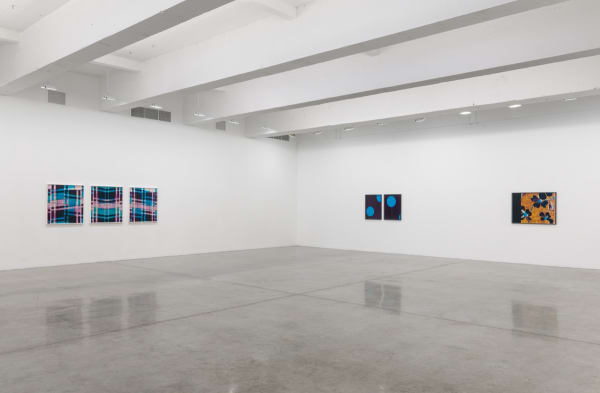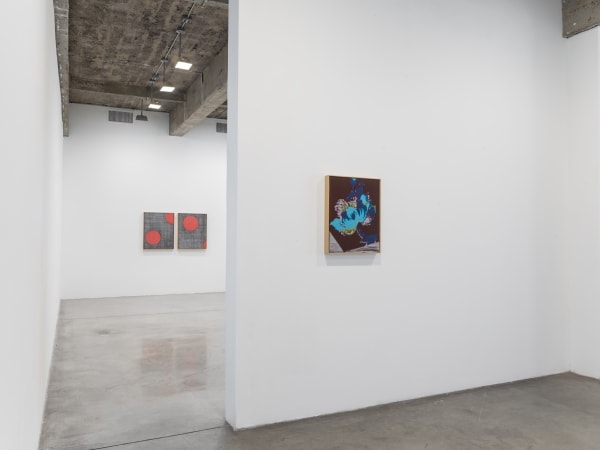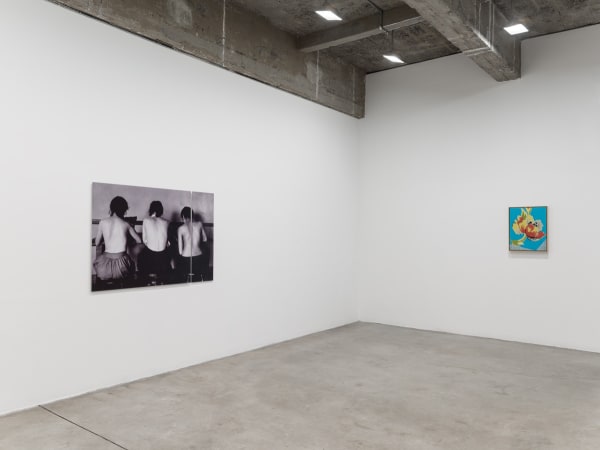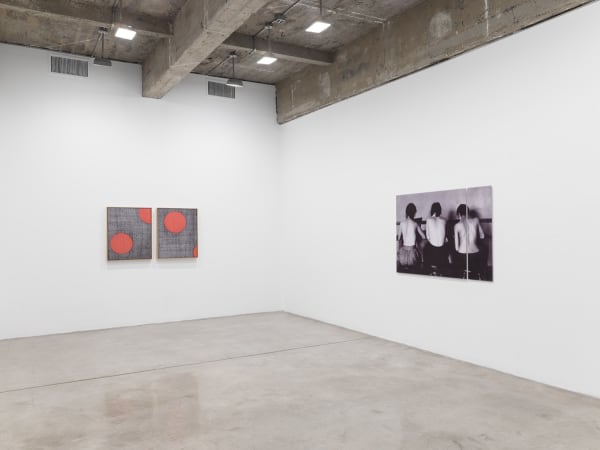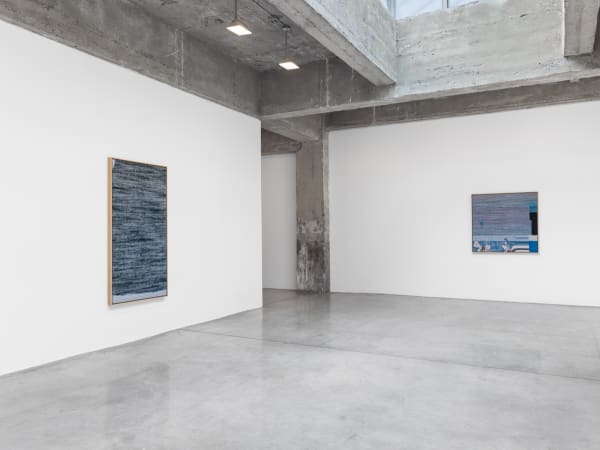LISA OPPENHEIM: A DURABLE WEB: Tanya Bonakdar Gallery, New York
Tanya Bonakdar Gallery is very pleased to announce Lisa Oppenheim: A Durable Web, the artist’s second solo presentation with the gallery. On view September 7– October 21, 2017, the exhibition features three new bodies of work that explore themes related to the body and labor within the history of photography and American textile manufacturing.
In her new exhibition, Oppenheim investigates this particular material history as it relates specifically to women’s work. As textile production shifted to factories and mills from domestic spaces in the 19th century, the relationship of object to labor became more abstract and less directly connected to the body of the maker. Recalling Marxist ideas about Capitalist labor and its dissociation from material goods, Oppenheim revives this relationship through her own production processes.
Central to the exhibition is a new series of photoworks entitled Spine, created for Oppenheim’s solo exhibition of the same title at MoCA Cleveland earlier this year. Based on early 20th century images found in the Library of Congress archive— a long-favored resource by Oppenheim— the photographs depict the backs of textile workers taken by documentary photographer and sociologist Lewis Hine. Hine became well known for his photographs documenting young factory workers in the beginning of the last century. In 1915, Hine produced portraits of textile workers in the Boston area to illustrate the insalubrious effects of textile manufacturing on young women’s bodies. Oppenheim reproduces Hine’s clinical but oddly sensual photographs at human scale, each life-sized image bisected vertically along the subject's spine. The physical bifurcation of the image itself underscores asymmetry, while its enlargement transforms each one from a picture to be looked at into a body that must be confronted in real space and time.
Oppenheim often employs materials or byproducts of material processes that are traditionally considered unusable or even defective. In her new Remnant series, on display in the main gallery, Oppenheim created photographic negatives using textile fragments she sourced from approximately the same time period and place of Lewis Hine's photographs. These textiles, originally mass produced, survive now only as craft products— low-cost scraps for quilting. Oppenheim then subjects these fragments to a process of extreme enlargement and presents them in large-scale format, in order to reveal their material structure, emphasizing the relationship of the body and labor inherent in their mechanical production.
In her new Jacquard Weave series, Oppenheim uses the photographs made from these vintage fragments as a basis for translating them back into textiles. With each iteration, the colors are inverted: the photograph is the color negative of the original textile, whose colors are again inverted in the programming of the Jacquard loom compositions. The resulting color palettes contribute to the complexity of one’s encounter with each surface.
The final compositions are as much a result of Oppenheim’s own editing processes as they are artifacts of the different apparatuses that produce them. Her mediations often betray the normal rules of the medium. Parts of production that are usually concealed or discarded remain visible: Oppenheim includes the weaving’s borders, which create their own abstract patterns and almost read as digital data; the warp is revealed to produce a kind of negative space in the pattern, reflecting actual negative space in the corresponding photographs downstairs. Mechanical production and digital reproduction repeatedly switch places with one another, blurring boundary and pushing the physical limits of each medium.
Through her own processes of translation, Oppenheim performs the relationship of the body to mechanical production absent in Hine’s photographs. This performative gesture is one example of Oppenheim’s unique ability to collapse time in her work, manifesting long extinct matter, past events, or antiquated processes into a material present. Using binary logic to produce visual imagery, these processes relate ideas of the concurrent development of early computing and photography, principles continually explored throughout Oppenheim's work.
Recent solo exhibitions include Lisa Oppenheim: Spine, Museum of Contemporary Art Cleveland, Ohio, which will travel to MCA Denver in the spring of 2018; Hereditary Language, FRAC Champagne-Ardenne, Reims, France (2015), Forever is Composed of Nows, Kunstverein in Hamburg, Germany (2014), and From Abigail to Jacob (Works 2004-2014), Grazer Kunstverein, Graz, Austria (2014). Oppenheim’s work has also been featured in several prominent group exhibitions including Light, Paper, Process: Reinventing Photography, The Getty Center, Los Angeles (2015), Photo-Poetics, Deutsche Bank Kunsthalle, Berlin and Solomon R. Guggenheim Museum, New York (2015), The Dying of the Light: Film as Medium and Metaphor, MASS MoCA, North Adams, MA (2014), AIMIA|AGO Photography Prize Exhibition, Art Gallery of Ontario, Toronto (2014), and New Photography, Museum of Modern Art, New York (2013). In 2014, Oppenheim was the recipient the AIMIA|AGO Photography Prize from the Art Gallery of Ontario and the Shpilman International Photography Prize from the Israel Museum.
Oppenheim was born in 1975 in New York City, where she currently lives and works. She received her BA from Brown University in 1998, and later and an MFA from the Milton Avery Graduate School for the Arts at Bard College in 2001. She also attended the Whitney Independent Study Program from 2002-2003 and the Rijksakademie van beeldedne kunsten in Amsterdam from 2004-2006. Her work is represented in the permanent collections of the Centre Georges Pompidou, Paris, Cincinnati Art Museum, Ohio, FRAC Champagne-Ardenne, Reims and FRAC Nord-Pas de Calais, France, FRAC Piemonte, Italy, Israel Museum, Jerusalem, The J. Paul Getty Museum, Los Angeles, Milwaukee Art Museum, Wisconsin, MIT List Visual Arts Center, Cambridge, Massachusetts, Museum of Modern Art, New York, San Francisco Museum of Modern Art, California, The Solomon R. Guggenheim Museum, New York, and 21er Haus, Vienna, among others.
All installation images above: Photo by Maris Hutchinson
